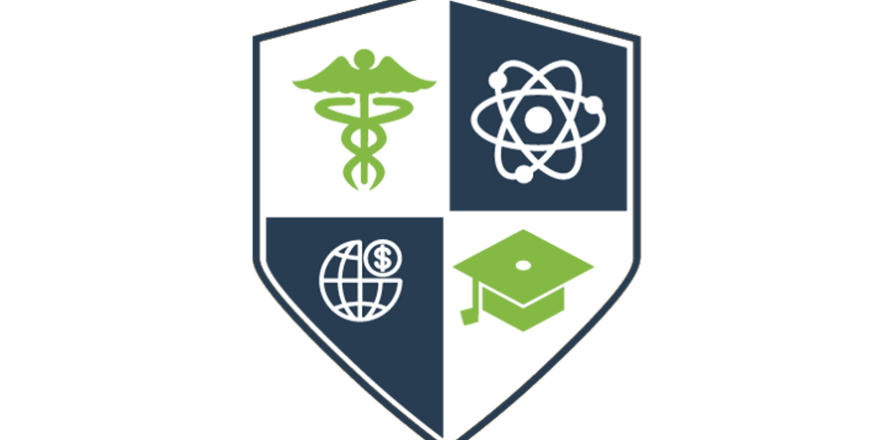
Microbiology Case Study: Interesting Case of a Cavitary Lung Mass
Case History
A 50 year old male with a significant past medical history of poorly controlled type 2 diabetes mellitus, hypertension, hyperlipidemia, smoking tobacco abuse and obstructive sleep apnea was referred to our institution’s pulmonology clinic for cavitary lung mass. The lung mass was incidentally discovered on chest x-ray and has been clinically stable on serial imaging for over two years; however, a previous extensive laboratory workup including computed tomography (CT) guided biopsy was unrevealing to its etiology. The patient was noted to be largely asymptomatic at his initial office visit; repeat diagnostic workup was ordered. CT chest imaging revealed a 2.8 x 1.9 x 2.0 cm cavitary lung mass in the posterior left lower lobe that was unchanged compared to outside CT imaging from approximately 4 months prior.

Given the chronicity of the lung mass, atypical infection (Nocardia, endemic fungi, mycobacterium) and primary pulmonary cancer were highest on the differential diagnosis. Blood tests including endemic fungal serologies, QuantiFERON-TB Gold, cryptococcal antigen, galactomannan and Fungitell (1-3)-B-d glucan assay were negative. Given the unrevealing non-invasive workup, a repeat CT guided biopsy was performed and core biopsy samples were sent for AFB, fungal and Nocardia cultures as well as for histopathological examination.
Histopathology revealed necrotizing granulomatous inflammation with empty spherules of Coccidioides suggestive of a remote infection of long duration (Images 2, 3). Additionally, no microorganisms were isolated from cultures. Based on these findings, an infectious disease (ID) consult was placed. The patient remained asymptomatic and revealed a long history of residing within areas of the Southwestern United States endemic to Coccidioides species (sp.) during his ID office visit. Repeat Coccidioides complement fixation was positive for IgG (Titer: 1:4) with negative IgM by immunodiffusion testing. Urine Coccidioides antigen tested by quantitative sandwich enzyme immunoassay was negative. These findings likely represent past history of coccidiomycosis and not active infection. Antifungal therapy was deferred due to the patient’s asymptomatic status. The patient was monitored with close clinical follow up and continued serial imaging.
Histopathology Images


Discussion
Coccidioides sp. are dimorphic fungi with a mycelial (saprophytic) phase in the environment and a spherule (parasitic) phase in its host.1 It is the cause of coccidiomycosis, also known as valley fever, desert fever or San Joaquin fever, which has a wide range of clinical presentations from subclinical manifestations (~60%) to an influenza-like illness followed by skin lesions to the most pathological form, disseminated disease.1 It can also cause the development of cavitary lung masses, as described in this case.1 It is endemic to the Southwestern region of the United States where it prefers dry, arid conditions.2 Infections normally occur by inhalation of infective arthroconidia, which have matured from mycelium, following disruption of soil.1 Once inside the host, lungs spherules containing endospores develop (Image 4).1 These spherules rupture releasing the endospores which can continue to develop into spherules to maintain a continuous parasitic cycle or can be exhaled into the environment to continue its saprophytic phase.1

Two morphologically indistinct species exist (C. immitis and C. posadasii) that can only be definitively identified by molecular methods.3 C. immitis is predominantly found in central and southern California while C. posadasii can be found in other non-Californian southwestern US states and extending into western Texas and down throughout Mexico and South America.3 When cultured, it grows rapidly at both 25°C and 37°C into woolly white colonies that develop alternating barrel-shaped arthroconidia that can be seen on tape prep with lactophenol blue.4
References
- Donovan FM, Shubitz L, Powell D, Orbach M, Frelinger J, Galgiani JM. 2019. Early Events in Coccidiomycosis. Clinical Microbiology Reviews, 33, e00112-19, DOI: 10.1128/CMR.00112-19
- Hernandez H, Erives VH, Martinez LR. 2019. Coccidioidomycosis: Epidemiology, Fungal Pathogenesis and Therapeutic Development. Current Tropical Medicine Reports, 6, 132-144, DOI: 10.1007/s40475-019-00184-z
- Kirkland TN, Fierer J. 2018. Coccidioides immitis and posadasii; a review of their biology, genomics, pathogenesis, and host immunity, Virulence, 9:1, 1426-1435, DOI: 10.1080/21505594.2018.1509667
- Love GL, Ribes JA. 2018. Color Atlas of Mycology, An Illustrated Field Guide Based on Proficiency Testing. College of American Pathologists (CAP), p. 234-235
